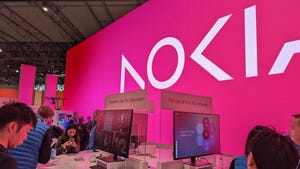Vodafone and Meta’s collaboration is a glimpse into the future of mobile streamingVodafone and Meta’s collaboration is a glimpse into the future of mobile streaming
Telecoms.com periodically invites expert third parties to share their views on the industry’s most pressing issues. In this piece Santiago Bouzas, Director of Product Management, Enea, examines the implications of a new collaboration between an operator and an internet giant.
September 9, 2024

In July, Vodafone and Meta announced a strategic partnership aimed at enhancing network efficiency by optimizing short-form video content across 11 European markets. This collaboration is new step in the evolving approach of communication service providers in managing the increasing demands on mobile data traffic. In the past this discussion has been more adversarial and has been labelled as the ‘fair share’ debate in European telecoms. The physical problem remains that network capacity becoming an ever more valuable commodity and as such the imperative to manage demand (bandwidth) without diminishing experience remains for the communication service provider.
As demand intensifies, particularly with 5G users consuming three to four times more data than their 4G counterparts, the physical radio network faces significant capacity challenges. Video streaming content, accounting for over two-thirds of data volume, emerges as an ideal focus for optimization. The partnership will leverage algorithms to manage short-form video content (in this case Instagram Reels) in real-time, aiming to reduce network strain without sacrificing user experience. Instagram Reels will adjust video quality based on real-time data provided by the telco. This in turn modifies the bandwidth demand of the streamed content on the radio transmission.
This collaboration is a welcome new step within the industry and its’ mutual benefit is to be established in practical terms. It is important to note that this initiative currently covers only a subset of content—Reels represent just a fraction of Instagram’s overall content, and Instagram itself constitutes less than 7% of the total content. The broader industry challenge of dense content consumption over the same physical network requires a more comprehensive approach, encompassing a wider range of large content providers (aka the ‘big 6’) such as Facebook, YouTube, AWS, and Netflix.
Emerging trends in the telecom industry
Cooperation has happened before e.g. the pandemic saw content providers practicing self-regulation to manage network load; however, post-pandemic, this cooperation waned, leading to renewed challenges regarding network capacity, particularly in the context of the Fair Share debate. Addressing this issue through cooperation is in the collective interest of all stakeholders, although it necessitates greater readiness from content providers to consider self-regulation.
Additionally, it is worth noting that telcos can optimize traffic selectively to maintain network access, particularly for specific content categories like video streaming, if the necessary network conditions persist, such as congestion. The Vodafone-Meta initiative could be the start of a more harmonious relationship between content demand (video streams) and network supply. This development will be closely observed by other telcos and content providers, who share the common objective of delivering content to users whenever and wherever it is desired.
Opportunities for smaller operators
Tier 1 operators may hold an advantage in negotiating with content providers, but successful cooperation depends on the willingness of the dominant content providers (responsible for over half of mobile internet traffic) and smaller regional providers to engage. Larger operators may have the leverage to negotiate such collaborations, whereas smaller operators may need to pursue this collectively through trade associations. Regulatory oversight may also play a role in ensuring an even playing field for neutrality and access cost, potentially requiring that similar controls be offered to all telcos within a region.
If cooperation between large-scale players, operators and content providers alike, fails to materialize due to cost or technical barriers, alternative methods of detecting and managing overloaded networks may become necessary. These include intelligent bandwidth shaping for video streaming, applied selectively and independently of content providers, by the telcos’ themselves.
The role of AI in future partnerships
While AI is not the central focus of the Vodafone-Meta collaboration, its potential role is significant. A combination of AI and machine learning (ML) could be employed to determine the optimal times and conditions for applying such controls. Predictive algorithms could foresee network congestion, allowing content delivery to adapt dynamically without human intervention, thereby enhancing overall network efficiency in real-time.
Over time, an AI based approach can be fine-tuned to deliver video content in a manner that perfectly balances subscriber needs with network capacity.
Broader strategic considerations
While focusing on cooperation with specific content providers and traffic flows can help avoid net neutrality issues, it may miss the broader opportunity to apply more holistic controls during times of network congestion.
A more effective approach is to manage streaming content as a category rather than for individual services, ensuring a consistent user experience across platforms. This strategy could prevent network bottlenecks more effectively while accommodating general traffic needs rather than catering to specific channels.
The Vodafone-Meta collaboration could form a blueprint for the future of digital connectivity and it is a ‘watch this space’ moment for telecom and content provider alike.

Santiago drives Enea’s Traffic Management portfolio, vision, and technology direction. Santiago brings more than 15 years of mobile internet industry experience, managing and leading product management and sales engineering, with extensive international experience in EMEA, Americas and APAC.
Read more about:
DiscussionAbout the Author
You May Also Like










.png?width=300&auto=webp&quality=80&disable=upscale)


_1.jpg?width=300&auto=webp&quality=80&disable=upscale)